The Phoenixes of Video Games, or How Flops Become Hits
"Video games as a service" is usually associated with unfair microtransactions, lacking content and watered-down story – but there's more to it. The term also implies an opportunity the devs have to mend the things that don't work properly.
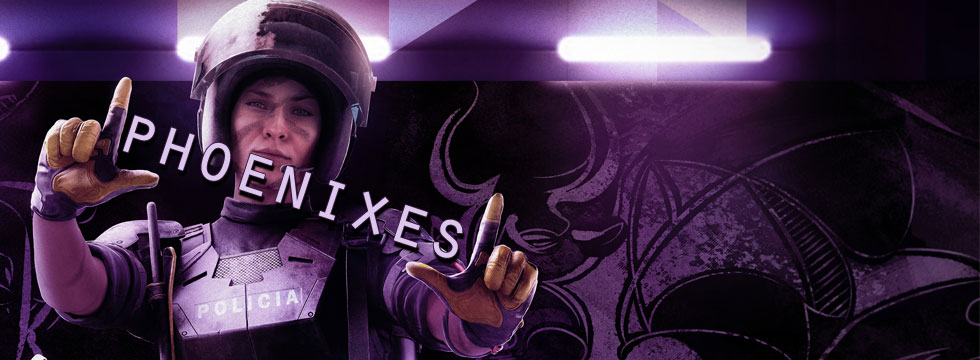
We've lately learned to approach the term "video games as a service" – which the biggest publishers seem to just adore – with some reservations, to put it mildly. The recent years have taught us to identify it with heaps of paid content, which – to all intents and purposes – should be either part of the core product, or distributed for free; with neglected storylines and with pretext stories without satisfying conclusions; with mandatory Internet connection at all times, even if not justified by the gameplay; and – since recently – with the invasive policy of lootboxes.
We need to remember, though, that there are also some positive aspects of this practice. Since the games receive financial support for years after the release, the developers can not only work on paid content, but also deliver some free expansions, providing a constant inflow of additional diversions. It's also more viable to introduce bigger changes, such as new game modes or even drastic alterations in the foundations of the gameplay.
That last bit has proven particularly important in cases of a few of the games that were considered total failures right after their releases. If they had utilized a classic distribution model, these games would have been doomed to become forgotten – treating them as a service, however, allowed the developers to improve all the things that didn't go quite as planned: eliminate the bugs, enhance the content, overhaul the controversial elements. Some games managed to come through with all these post-release changes and succeeded at rooting out the initial reluctance of the players, making their games rise from the ashes like the mythical Phoenixes, allowing them to finally hit the home run.
Rainbow Six: Siege
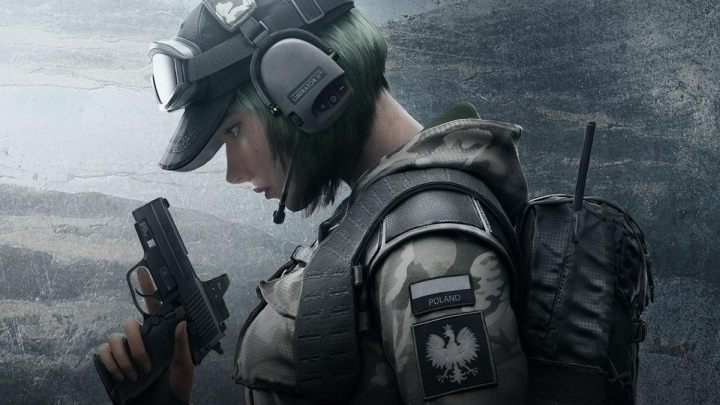
INFO:
- Genre: tactical online FPS
- Date of release: December 2015
- Platforms: PC, PS4, XOne
- Producer: Ubisoft
- Our score: 7.5 (PC)
- Monetization: lootboxes with cosmetic items, ability to boost progress with real money
Focusing solely on multiplayer in the latest iteration of the Rainbow Six tactical FPS series was quite a gamble. At first, everything indicated that it was a bad decision – although the critics praised the gameplay groundwork and the engine governing the destruction of the arenas was quite impressive, the first week after the game's release was marked with terrible server troubles. Ubisoft soon managed to solve all of these, but when the players were able to enjoy the game without technical hiccups, it turned out that the game lacks content. Different operators gave access to new strategies, but there were just too few of them to properly diversify the experience in the long run. The same went for the maps and modes, the shortage of which made the game seem a budget free-to-play rather than a full-blown AAA.
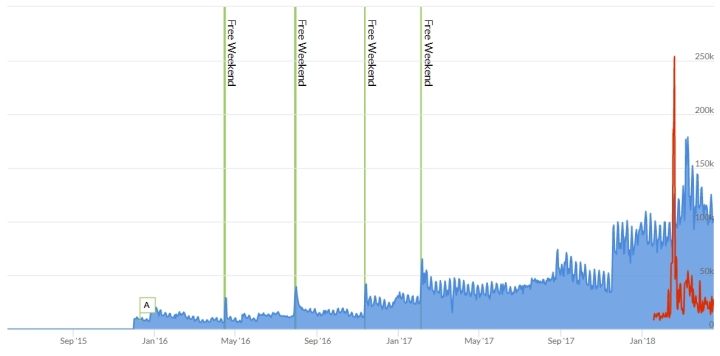
SteamDB stats clearly show the progress Siege made. The numbers in blue show the number of players at the given time; the red ones are Twitch spectators.
Despite the rather stormy beginning and initially cold reception, Ubisoft was determined to support Rainbow Six: Siege during the following years. Apart from mending the technical side of the game, the developers also released new maps and operators for free every three months. Bigger updates came hand-in-hand with official tournaments and free weekends, which both keep the current players interested and brought new recruits. This strategy proved to be particularly successful – while most games experience the greatest surge in popularity right after the release, Siege's fanbase has constantly been growing. In April, Ubisoft was even bragging about having passed the 30-milion players mark.
The increasing popularity of the game is also reflected in the reviews, which are much more favorable now that earlier after the release. This is also due to the fact that – when designing new operators – the developers look closely at the feedback from the hundreds of thousands of players and try to create characters, who distort the game's meta. Along with new updates, the strategies that have always worked became redundant, or at least less effective, forcing players to adjust to new rules. Thanks to that, Siege is still a game that can surprise you, and – despite being more than two years old – remains one of the most popular competitive online video games.
DriveClub
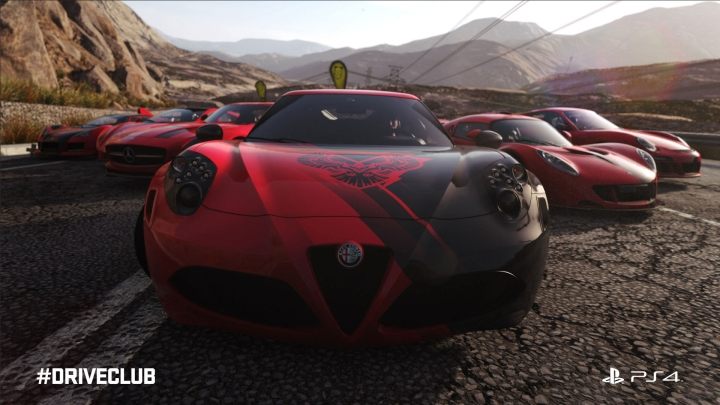
INFO:
- Genre: Car racer
- Date of release: October 2014
- Platforms: PS4
- Producer: Evolution Studios
- Our score: 6.0
- Monetization: DLC with additional tournaments and cars; bigger expansion introduced bikes
DriveClub, the newest racer by the developers of Motorstorm, was supposed to be one of the launch-day games of PlayStation 4. The promo materials of the game occasioned real enthusiasm: the graphics were dazzling, network features were noticeably integrated into the game, allowing players to create clubs and challenge each other; the driving model was a combination of arcade and simulation; and finally a free version of the game for PlayStation Plus, which – albeit more moderate with the content – still offered plenty of entertainment.
The developers at Evolution Studios didn't manage to reach gold with their game in time for the release of PlayStation 4 and DriveClub ultimately debuted a year later. The release was, however, a failure of immense proportions – the servers were completely unable to cope with greater numbers of players and all the online functionalities – which had been planned to be the centerpiece of the game – were not working properly. The problems were so serious in fact, that it took whole months for the devs to mend the game. In the meantime, a pack of additional content, which had been designed as paid DLC, was released for free to all owners of the game – the milk had already been spilled and thousands of players were quickly losing interest in the game anyway. The delayed release of the free version that was promised to owners of PS Plus didn't help a bit either.
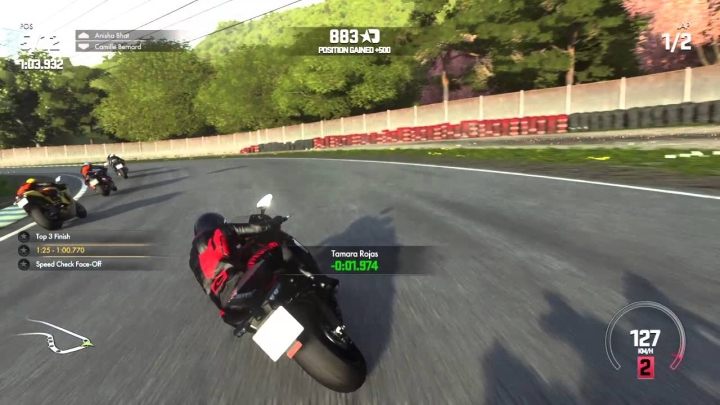
When the greatest problems were finally contained, the devs could focus on expanding the game. First, a photo mode along with weather effects were introduced – just two of the things that should have been there since day one. Thanks to the latter, though, DriveClub evolved from pretty to beautiful, and remains one of the best-looking PS4 games even today. Next came new tracks, including some located in Japan, along with a replay mode and AI improvements. The riding and collisions physics were also overhauled. Eventually, in June 2015, the free PS Plus edition went live. It admittedly took a while, but DriveClub finally became the game players had hoped for – a game filled with content, featuring amazing graphics and a pleasant driving model that's somewhere between arcade and simulation.
Sadly, even though the players have largely forgiven Evolution Studios their mistakes and were able to enjoy a very good racing game in the end, Sony wasn't too happy about the whole situation. The Bikes expansion – which probably was the studio's last hope – released in October 2015, must have failed the publisher's financial expectations. And so, in March 2016, the studio that gave us the Motorstorm and WRC series, was closed down.

Special case #1 – Gran Turismo Sport
The latest installment in the Gran Turismo series was a bold experiment designed to reroute the franchise towards online play. The move was ultimately a successful one, and the game met with warm reception among the players, even though many players couldn't get over the lack of singleplayer campaign. Polyphony saw that there's a pretty simple way of making their game an even bigger success – they listened to the community and, with a single update, furnished the game with a career mode. The problem was that the mode was obviously half-baked and rushed; it didn't offer the same quality as the rest of the game, mainly due to poor AI of the opponents. The players, who had already been enjoying the game soon lost interest in the campaign – which, on the other hand, was simply not good enough to bring in new players. If it ain't broke, they say...
Tom Clancy’s The Division
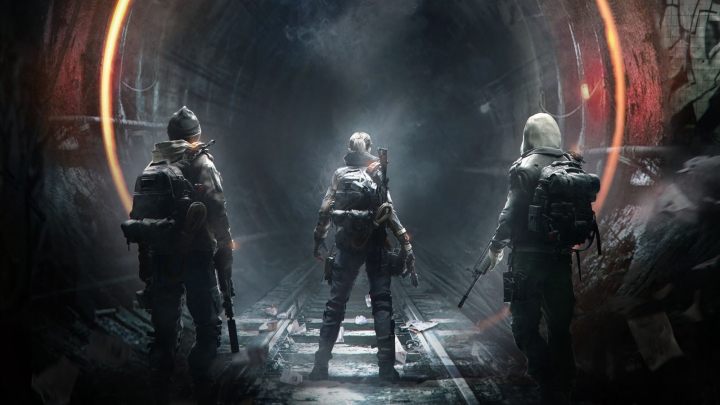
INFO:
- Genre: online action game
- Date of release: March 2016
- Platforms: PC, PS4, XOne
- Producer: Ubisoft Massive
- Our score: 7.0
- Monetization: DLC with additional game modes, character customization
Tom Clancy’s The Division may not be the best example insofar as the game was quite successful right after the release. There were some problems with the servers (the famous player queue), and the minor issue of graphics downgrade, compared to the first materials, but in general, the game performed well on the market and mostly reaped positive reviews. The decisions Ubisoft made after the release were the problem in this case, instigating many players to give up the game.
The first disappointment came with the first new game mode, designed to provide a proper endgame to The Division – the Incursions. The players had hoped for some proper raids, but they were served an iteration of the horde mode that made them go "Meh." Another disappointment was the Dark Zone, which from a cool and eerie place brimming with unsettling atmosphere was turned into a festival themed "how can I ruin your game today?" by a group of particularly mean players. The greatest controversies, though, were generated by the infamous 1.3 patch, which rescaled the difficulty of the enemies to match the players with the best equipment, consequently rendering the rest virtually unable to cope with new opponents. It basically made it impossible to play The Division for those players who preferred fighting alone, and on top of that, made most rewards totally inadequate compared to the effort required to obtain them.
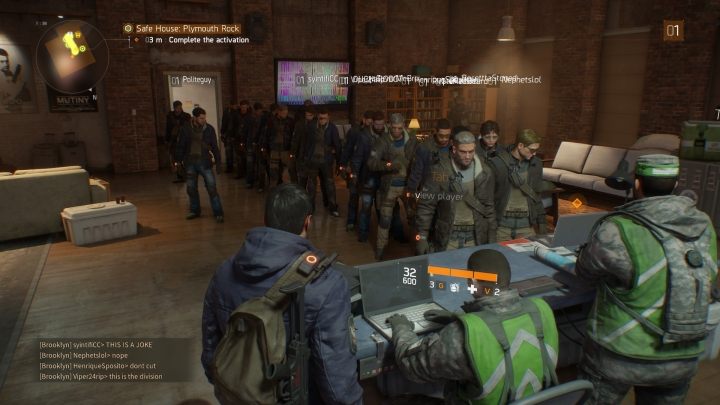
This was enough to discourage loads of players, who started turning away from the game by the thousands. The devs, realizing what's going on, decided to undertake a sweeping repair operation. This time they listened to the community; some players were even invited to the studio to discuss the future of The Division. It also became a custom that before being released, new updates were tested on a special server. Finally, the 1.4 patch restored the old balance of the game and introduced a sort of a safe version of the Dark Zone, where you weren't risking being attacked by other players.
A real breath of fresh air, however, was brought into The Division with one of the paid DLCs. The Survival mode turned out a fantastic addition, which apart from new rules also introduced uncannily intelligent enemies. Further updates and expansions made the game even better, saving the franchise from a terrible fate it could have met with, had the series of ill-conceived decisions not been stopped soon enough after the release. The game is still doing pretty well, providing quality entertainment for the players eagerly anticipating a sequel.
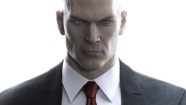
Special case #2 – Hitman
The new Hitman was divided into six grand episodes, released once every few months each and containing very complex missions. The decision was often criticized by players, who were rather annoyed that they had to wait so long for new maps – even if the quality of each episode was impeccable. When the last episode was finally released, Hitman proved to be one of the best installments in the franchise, filled to capacity with interesting content and offering loads of fun. Still, the bad rep caused by the seemingly pointless division of the game into smaller episodes was prevailing. The game, despite the initial skepticism, became a really good product overall – it’s just hard not to feel like it should have been released a bit later, but as a complete unit; the reception would sure have been better in such case.
Street Fighter V
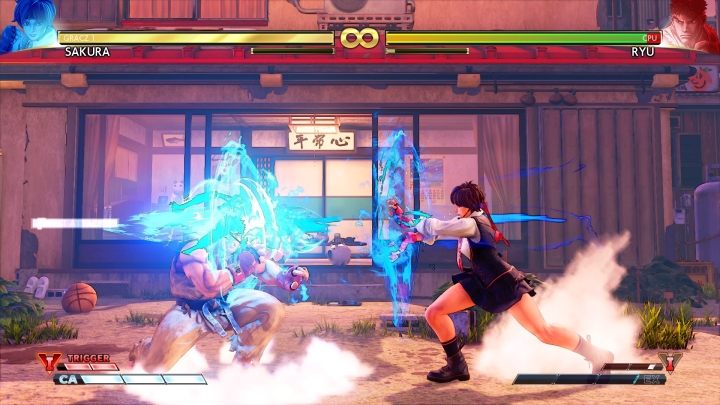
INFO:
- Genre: fighting game
- Date of release: February 2016
- Platforms: PC, PS4
- Producer: Capcom
- Our score: 9.0 (after patches)
- Monetization: additional outfits, characters and arenas – the latter two can be purchased for in-game currency earned by winning games.
One of the prevailing themes when discussing post-release quality of games has to be rushed development, which results in unfinished games offering too little content on the release day. At least in this respect, Street Fighter V left the competition lagging behind, offering as few as just 16 fighters (compare to Street Fighter IV with 25 available on the day of release and reaching 44 with all DLCs) and a very moderate number of available modes. Not only did the game not feature a story campaign – it didn't even have an arcade mode or an in-game store. The final nail to the coffin were the unstable servers, kicking players out every few minutes if someone was unlucky enough… And remember that you had to stay online to earn in-game money. Although under the guise of disappointing live tools and scarce content hid a really good fighting game, you couldn't shake off the feeling that the Japanese want to spoil you the fun at all cost.
Mending this game was a slow and laborious process. It quite regularly received new characters (currently 31 fighters available), as well as outfits and arenas (which in theory were paid content, but you could also purchase them with in-game money), but the story mode only became available six months after the game's release. Solving the server issues also took an absurd amount of time – rebuilding the infrastructure was completed more than a year after the release. And that's when the game actually became a great brawler – it finally was fleshed out the right way, and the core mechanics were complemented with a fair amount of solid content.
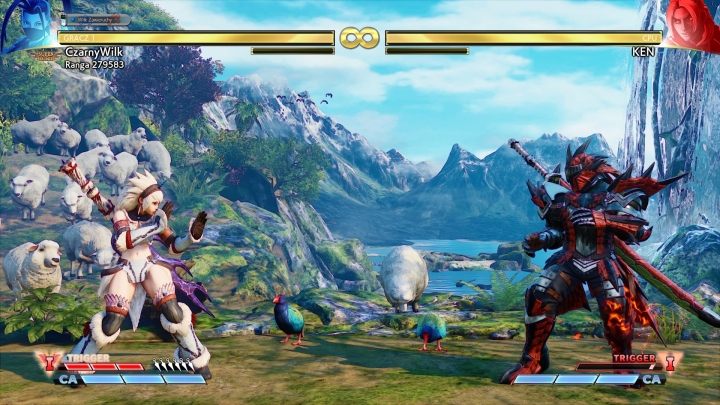
Street Fighter V didn't really flourish until this January, though, when an enhanced edition was released to inaugurate the beginning of the third season. The Arcade Edition was available free of charge for everyone who'd owned the game. Apart from the titular, long-awaited arcade mode, the new version brought about a more complex combat system, weekly special duels, valuable rewards and an overhauled interface. After that update, Street Fighter V has become an undisputed king of the genre and remains the best fighter game currently on market – if only it didn't take two years of such a horrific struggle.
Battlefield 4
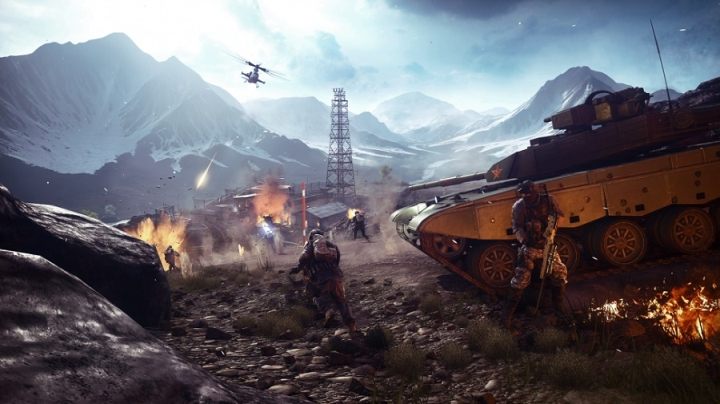
INFO:
- Genre: online FPS
- Date of release: October 2013
- Platforms: PC, PS4, XOne, PS3, X360
- Producer: EA DICE
- Our score: 8.5 (PC)
- Monetization: additional maps, weapons, vehicles and modes
You're throwing a grenade and it slips through the ground texture and nothing happens. The tank merges with the wall, gets seizures and becomes stuck. The rifle suddenly vanishes from your hands and after shooting with a silencer on, all sound from the game disappears for a few seconds. Eventually, the server starts stammering and kicks you out to the main menu. You end up joining a 48-players server instead of 64 – just to be sure you’re going to last until the end of the match.
The above sentence opened the review of Battlefield 4 on our affiliate website back in 2013. Although the game received a decent score, the reviewer pointed out the outrageous amount of bugs, technical shortcomings and glitches riddling the game – and that still remained one of the more lenient opinions voiced right after the release. EA DICE set the bar high with previous installments in the famous series, and – unfortunately – didn't really have the legs to deliver, and hence the game was a true glitch fest. Things were so grave in fact, and the reputation of the so-far-flawless developer was so at risk, that it created an all-hands-on-deck type of situation, forcing the studio to temporarily cease the work on all other projects and franticly try to bring the game to order. Even Electronic Arts themselves decided to alter their approach to pushing the release dates in the future, allocating more time for final testing and QA.
Despite the initial crisis, DICE managed to stitch their flagship title up – even though it admittedly took a while. The technical shortcomings were successively eliminated and new content introduced, but the gameplay formula was also changed in time. The gunplay became more dynamic – characters moved faster and excessive recoil was eliminated; interface was remodeled and soldiers became a bit more resistant. Even the way sounds had been generated was changed. Before the release of Battlefield 1, the entire downloadable content became available for free to everyone interested. With all these changes, BF4 can today be called a rightful member of the popular series, but again – it's a bit too late.

Special case #3 – Battlefront II
The dust after the release of Star Wars: Battlefront II hasn't quite settled yet, but the game has already become an icon. An icon of dirty business practices, microtransactions and lootboxes that provided an unfair edge for those willing to pay, while promoting a specific form of gambling. The cascade of criticism that hit the game was of truly biblical proportions and EA had to back down on their controversial practices (the rumor has it that it was mainly due to Disney's intervention). Microtransactions in the game were utterly abolished to quite recently come back in a different, much less invasive form. That's certainly a step in the right direction, but only time will tell if the whole situation will allow Electronic Arts and EA DICE to redeem – the trust of the community has been strongly abused, and it wasn't the first time, too.
Destiny

INFO:
- Genre: MMOFPS
- Date of release: September 2014
- Platforms: PC, PS4, PS3, X360
- Producer: Bungie Software
- Our score: 6.5
- Monetization: microtransactions introducing cosmetic changes that didn't influence gameplay, along with bigger expansions that provided many new elements
Destiny was supposed to bring new quality to online shooters; a game boldly combining an FPS with mechanics typical of MMORPG. These promises won over millions of players, and the game by the creators of Halo sold in massive quantities on release. First impressions were indeed positive – shooting was very satisfying and fun, the graphics were awe-inspiring and the game just held together as an elegant and well thought-through whole. Unfortunately, the glee was eventually quenched by the game's neglected storyline, noticeable lack of variety, the emptiness on maps and trite quests that might as well could have been spat out of a generator.
True, there was a lot to complain about, but the number of copies sold and players active every day warranted Bungie to start implementing serious changes. The turning point came with the release of the third expansions, The Taken King, which was concurrent with the 2.0 patch that brought some fundamental changes in the game's mechanics. Many of the criticized elements were mended, including the system of quests and character progression. The expansion also seriously improved the narration – which didn't go by unnoticed.
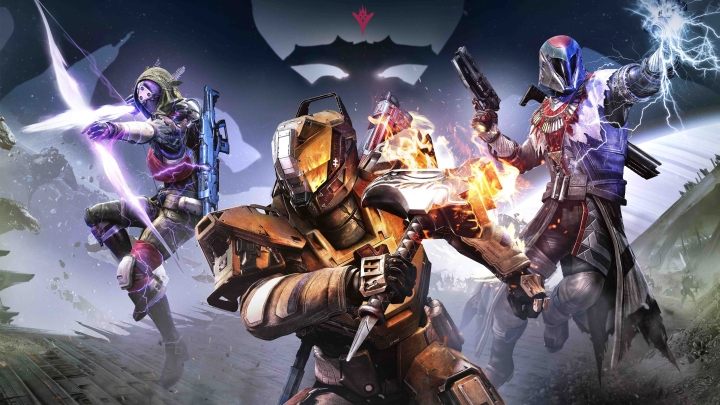
From that moment on, Destiny started flourishing. The players who hadn't given up on the game approved of the new direction, while some of those who had been unsatisfied with the game's initial condition returned – and everyone started praising the game, which only generated more interest and brought even more Guardians. The game was soon surrounded by an active community (with its own convention – Destiny Con) that was filling up the servers up until the sequel was released… oddly enough, Destiny 2 is also being criticized for coming short of providing enough content. Thus far, not much has been done about that and it's not yet clear whether Bungie will manage to turn the tide in its favor once again.
No Man’s Sky
INFO:
- Genre: sandbox action game
- Date of release: August 2016
- Platforms: PC, PS4
- Producer: Hello Games
- Our score: 5.5
- Monetization: none
No Man’s Sky (aka One Man's Lie) was one of the most spectacular failures in the industry during the recent years. The game was immensely hyped by Sony, which generated huge interest with the amazingly looking pre-release materials and astonishing visions spread by Sean Murray, the head of the small studio, Hello Games. We were supposed to be taken to a vast, gargantuan universe, able to explore diverse planets generated procedurally by advanced algorithms – some of them brimming with odd looking creatures, others offering nothing but endless systems of caves and dungeons. We were supposed to be discovering, trading and fighting space pirates – to feel like the protagonist of a hard sci-fi book.
A few hours after the release were enough to pull you from the stars back to Earth. The game's world was indeed huge, but it soon turned out that it only seems big – in reality it was repetitive and a bit boring, with nothing waiting for you at the end of the road; nothing motivating you to keep exploring. The space combat and trading mechanics were banal, the visuals a magnitude worse than promised, and the entire game plagued by all sorts of bugs, which sometimes hung your whole system. The worst part was that most of the content promised by the developers wasn't there – not even a trace of it.

The backlash was unimaginable, astronomical. Sean Murray, thus far pretty active on the Web, went totally silent, not even trying to defend himself and his team, which made the players, who rightly felt cheated, all the more furious. The silence was broken a few months later, when a huge update was announced. The 1.1 version introduced a good dose of new content – apart from a slew of minor tweaks, it finally implemented base building along with a set of related missions, which finally gave players a sense of purpose. The planets received more variety, it was possible to lease a freighter or play in two additional modes – hardcore survival or totally relaxed creative. No Man's Sky still wasn't the game it should have been, but at least it became a game, which you could play for a few dozen hours.
Hello Games didn't stop there, though. Another big update improved the visuals and introduced vehicles that facilitated exploration of planets. It also added the ability to create racetracks and compete with other players along with another extreme game mode. The following update gave the game an extensive storyline and the ability to shape the land, and then recently we got multiplayer that so many players hoped for from day 1. Even though many players still can't forgive Hello Games the cheeky spreading of lies, the developers can't be denied the willingness to bring their game at least close to their initial concept – today's No Man's Sky is definitely a different game than it was two years ago. And increasing numbers of players are gradually coming back to give the game a second chance.









